Effects of soil and water conservation and its interactions with soil properties on soil productivity
GUO Wang(郭旺) , LI Zhong-wu(李忠武) , SHEN Wei-ping(申衛(wèi)平), WANG Xiao-yan(王曉燕),ZENG Guang-ming(曾光明) , CHEN Xiao-lin(陳曉琳) , ZHANG Xue(張雪) ,ZHANG Yue-nan(張?jiān)侥? , LIU Gui-ping(劉桂平), WANG Shu-guang(王曙光)
1. College of Environmental Science and Engineering, Hunan University, Changsha 410082, China;2. Key Laboratory of Environmental Biology and Pollution Control of Ministry of Education (Hunan University),Changsha 410082, China;3. Soil and Water Conservation Research Institute, Shaoyang 422002, China;4. College of Civil Engineering and Architecture, Changsha University of Science and Technology,
Changsha 410076, China
1 Introduction
Hilly red soil regions, which have abundant water and heat resources, have the potential for high productivity potential and could be essential in resolving growing concerns on food sufficiency [1]. In recent years,economic forests have developed rapidly in southern China. However, farmers tend only trees and overlook the soil in which these trees were planted. Shrubs and litter are completely cleaned by the use of herbicides,and the original vegetation can become seriously damaged. Soil and water erosion under trees have become more prominent. While the forest coverage rate increases, closer inspection shows that soil erosion by water is evident [2]. Long-term soil and water erosion,together with the inherent fragility of hilly ecosystems,has caused severe degradation of red soils, the results of which include high acidity and low nutrient content in the soils [3]. As a result, soil and water erosion has become one of the greatest limiting factors of soil productivity in the hilly red soil regions of southern China.
Soil productivity is defined as the capacity of soil to produce a certain yield of crops or plants given a specified system of management. Soil erosion has long been recognized as an important factor in reducing the productivity of many soils. In fact, the extent to which soil productivity responds to erosion depends on several variables, such as crop or plant types, soil properties,management practices, and climate characteristics [4].Over the last 50 years, a significant amount of researches have been carried out to study the relationship between erosion and soil productivity [4-7], but the conclusions of these works are inconsistent. Some studies reported that soil productivity responds strongly to erosion, while others reported a much weaker effect [4]. Several studies in the hilly red soil region of southern China have been carried out [3, 8-10]. These studies generally focused on estimating differences in soil organic carbon (Soc) in relation to land use, vegetation restoration, climate, and topography. Extensive research that seeks to understand the response of soil productivity to soil erosion has also been undertaken. Soil and water conservation (SWC) has been found to play an important role in soil nutrients on a slope. As early as the 1970s, SWC campaigns under the umbrella of the World Food Programme were initiated to combat severe soil degradation [11]. Since then, the importance of SWC and its effects on runoff and sedimentation reduction have been demonstrated all over the world [11-14]. HESSEL and TENGE [14] used a process-based erosion model to simulate the effects of SWC measures on catchment-scale runoff and erosion and found that their effects differed from those at the pixel scale. The studies, however, focused only on SWC modeling and its impacts on runoff and sedimentation reduction. Limited information is available on the effects of SWC on soil organic carbon and soil productivity. It is therefore of utmost importance to evaluate soil productivity under different SWC mechanisms so as to provide useful information for soil erosion predictions and rational implementation of SWC measures. The cesium-137 (137Cs) patterns were utilized to observe spatial variations in surface soil, with specific objectives as follows: 1) To apply the137Cs technique to assess soil redistribution patterns under different SWC mechanisms;2) To investigate spatial variations in surface soil properties and aboveground biomass; 3) To assess the influence of SWC and its interactions with soil properties on soil productivity. To achieve these objectives,137Cs and other soil properties, as well as the aboveground biomass of three different runoff slopes, are assessed. A management baseline for enhancing soil productivity potential was provided in this work.
2 Materials and methods
2.1 Description of study site
The experiment was conducted in the Institute of Soil and Water Conservation in Shaoyang City of Hunan Province, China (111°22′E, 27°03′N) (Fig. 1) over a period of seven years. The altitude in the area ranges from 231.18 m to 276.63 m above sea level. The area is characterized by a typical subtropical monsoon climate,with an annual mean air temperature of 17.1 °C and an annual frost-free period of 278 d. The annual rainfall here in each year is concentrated between April and September and averages 1 397 mm. The soils in the area are characterized by quaternary red and yellow soils with a soil texture of sandy loam. Serious soil and water erosion is also found in this area.
An erosion-productivity study was started in the hilly red soil region of southern China in 2003. Three runoff plots were established in the study area. The slope gradient, length, and width of the plots were 15°,15 m, and 5 m, respectively. The plots were located parallel to each other and separated by 50 cm cement bricks. At the bottom of each plot, a trough was used to collect runoff and sediments from August 2008 to February 2010. The sediment yield was 55.5 kg from plot I, 29 kg from plot II, and 19 kg from plot III. The cover vegetation was made up of weeds (plot I), weeds and pines (plot II), and grass (plot III). Plot I was used for comparison, and plots II and III represent two different soil and water measures.
2.2 Soil sampling and vegetation measurements
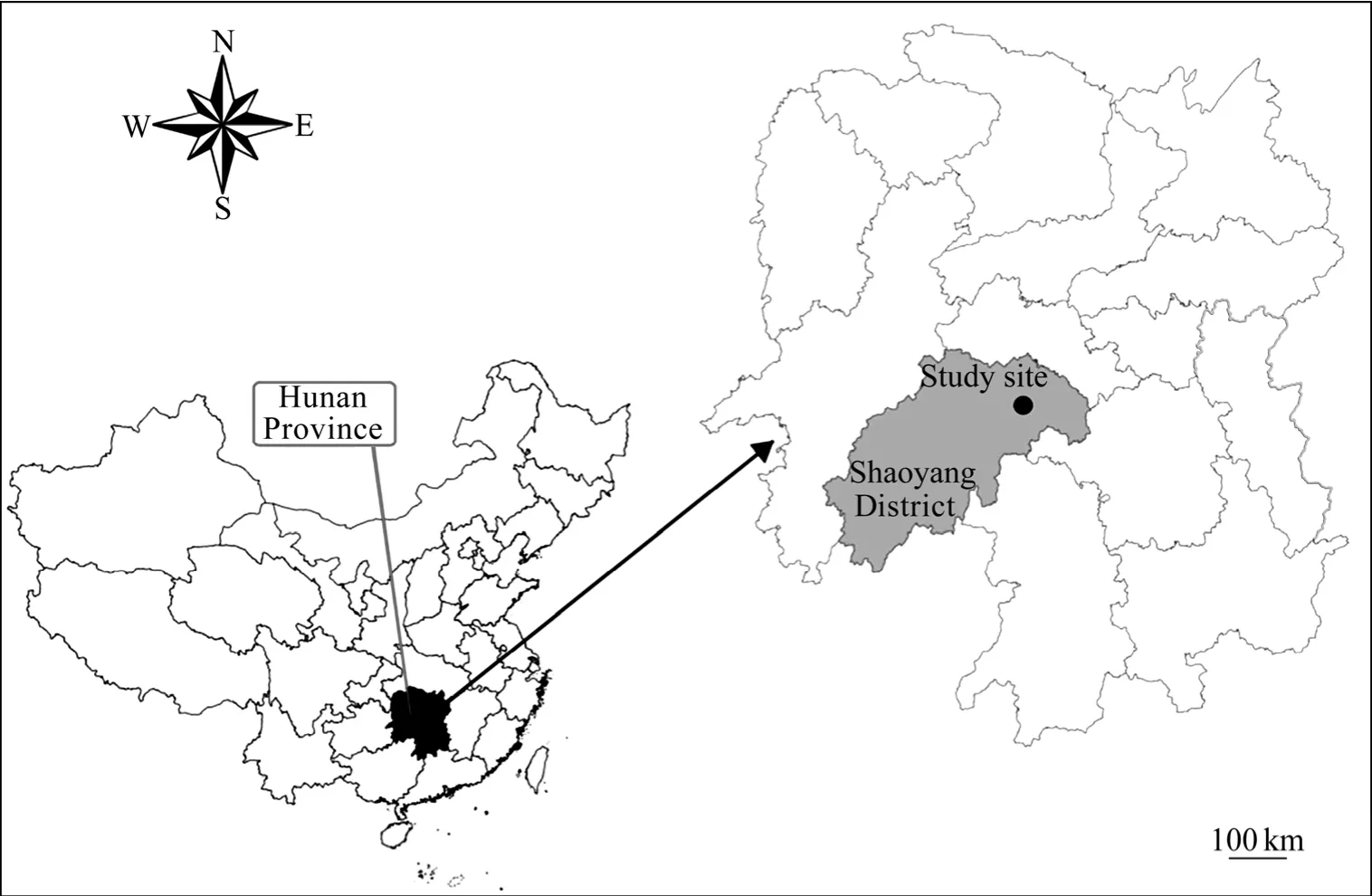
Fig. 1 Location of study site
After setting forest-grass measures, each runoff plot was divided into three 5 m × 5 m sections; appropriate sections were designated as upslope, midslope, and downslope. Three replicate cores (1 m × 1 m) per section along a diagonal transect were set up. Soil sampling in each runoff plot was carried out in February 2010. Soil samples were collected 0 to 20 cm below the soil surface,and three to five sets of samples were collected from each core. After determining their bulk density (Bd), soil samples were air-dried, crushed, and passed through a 2 mm sieve. Coarse materials, such as gravel and roots,were removed. Samples of the <2 mm fraction were weighted and analyzed for soil texture, pH,Cec,Soc, total nitrogen (Tn), available nitrogen (An), total phosphorus(Tp), available phosphorus (Ap), total potassium (Tk),available potassium (Ak), and137Cs inventory. The analyses were carried out according to the procedures in a previous study [15]. After surface soil sampling (0-20 cm), aboveground biomass samples of herb were collected from each core. Vegetation in every core was sampled destructively. Vegetation samples were ovendried for 24 h at 70 °C and weighed to the nearest 0.01 g[16].
2.3 Data statistics
The total137Cs inventory (Bq/m2) of topsoil (0-20 cm) is calculated by

whereiis the number of sampling depth andnis the total number of samples with detectable137Cs,Ciis the137Cs activity of samplei(Bq/kg),Bd,iis the bulk density(g/cm3) at depthi, andDiis the depth (m) of samplei.
Three replicates were used for each analysis, and data are presented as the mean values of triplicates.Correlations between parameters were calculated by Pearson correlation coefficient (SPSS 13.0 software).Principal component analysis (PCA) and multiple regression techniques were run on these data using SPSS 13.0 software. In PCA, factors with cumulative sample variances of 80% or above were selected. Factor rotation was done using the varimax method. Soil properties with factor loadings >0.50 were included in each factor. When more than one properties were selected within a factor,their correlation coefficients were taken into account for the selection. Among the correlated soil properties atP≤0.05, the soil property with the highest factor loading was selected for further consideration [17]. To gain further insights into how these factors individually affect aboveground biomass, the selected soil properties were regressed against the aboveground biomass.
3 Results and discussion
3.1 Soil properties
The physical and chemical properties of soil (Table 1) exhibited high variability, with coefficients of variation (Cv) ranging from 2.27% for pH to 130.41% for available phosphorus (Ap). The soil redistribution can be inferred from the distribution of137Cs inventories on the slopes. For plot I,137Cs inventories were found to increase from the upslope to downslope regions, being lowest at the upslope and highest at the downslope; the137Cs inventory of the latter was 2.47 times higher than that of the former (Fig. 2). In plot II, however,137Cs inventories decreased from the upslope to downslope,showing a 39% decrease at the downslope compared with that at the upslope. In plot III,137Cs inventories were also found to decrease from upslope to downslope,ranging from a low value of 263.7 Bq/m2at the downslope to a high value of 779.6 Bq/m2at the upslope.From the distribution of137Cs inventories, soil loss could be concluded to occur at the upslope and soil accumulations at the downslope with no SWC measures(plot I). This pattern of soil redistribution, characterized by soil loss from the upslope and deposition at the downslope, is typical of erosion in abandoned slope lands [18-20]. In contrast, little soil loss from the upslope to the downslope occurred under the condition of forest-grass measures. This result is also consistent with that of the studies by HERWEG and LIDE [21] and DURáN et al [22], which suggest that the effect of soil and water forest-grass measures on soil loss is evident.This estimation is consistent with the sediment yield collected from different plots (55.5 kg from plot I, 29 kg from plot II, and 19 kg from plot III). Some sediment loss from plots II and III was observed, mainly because the fine particle-sized fractions were selectively moved out of the slope by water erosion [23].
Given the high variability of soil properties, our first approach was to identify whether or not there existed any statistical relationship between soil properties (Table 2).Pearson correlation coefficients indicate some general relationships. Significant correlations were observed between soil properties and aboveground biomass, as well as between soil properties. Aboveground biomass was positively correlated toCecand negatively correlated toTkandSoc. Among soil physical and chemical properties, 26 significant correlations were observed.Strong positive correlations were observed amongSoc,An,Tn, andSoc/Tn. Similarly, correlations between pH andTp,Soc,Bd, andTp;CecandAp,Tp, andSt; andAnandTn,Tp,Soc, andSdwere also positive and highly significant.Here,Bdis bulk density;Cecis cation exchange capacity;Anis the available nitrogen;Apis the available phosphorus;Akis the available potassium;Tnis the total phosphorus;Tkis the total potassium;Socis soil organic carbon;Sdmeans sand;Scmeans silt;Cymeans clay.These correlations reflect multicollinearity among soil physical and chemical properties, which makes the interpretation of multiple regression equations between aboveground biomass and soil properties unreliable [24].This high multicollinearity of the soil properties indicatesthat no single soil variable yield results in decreased aboveground biomass [25].
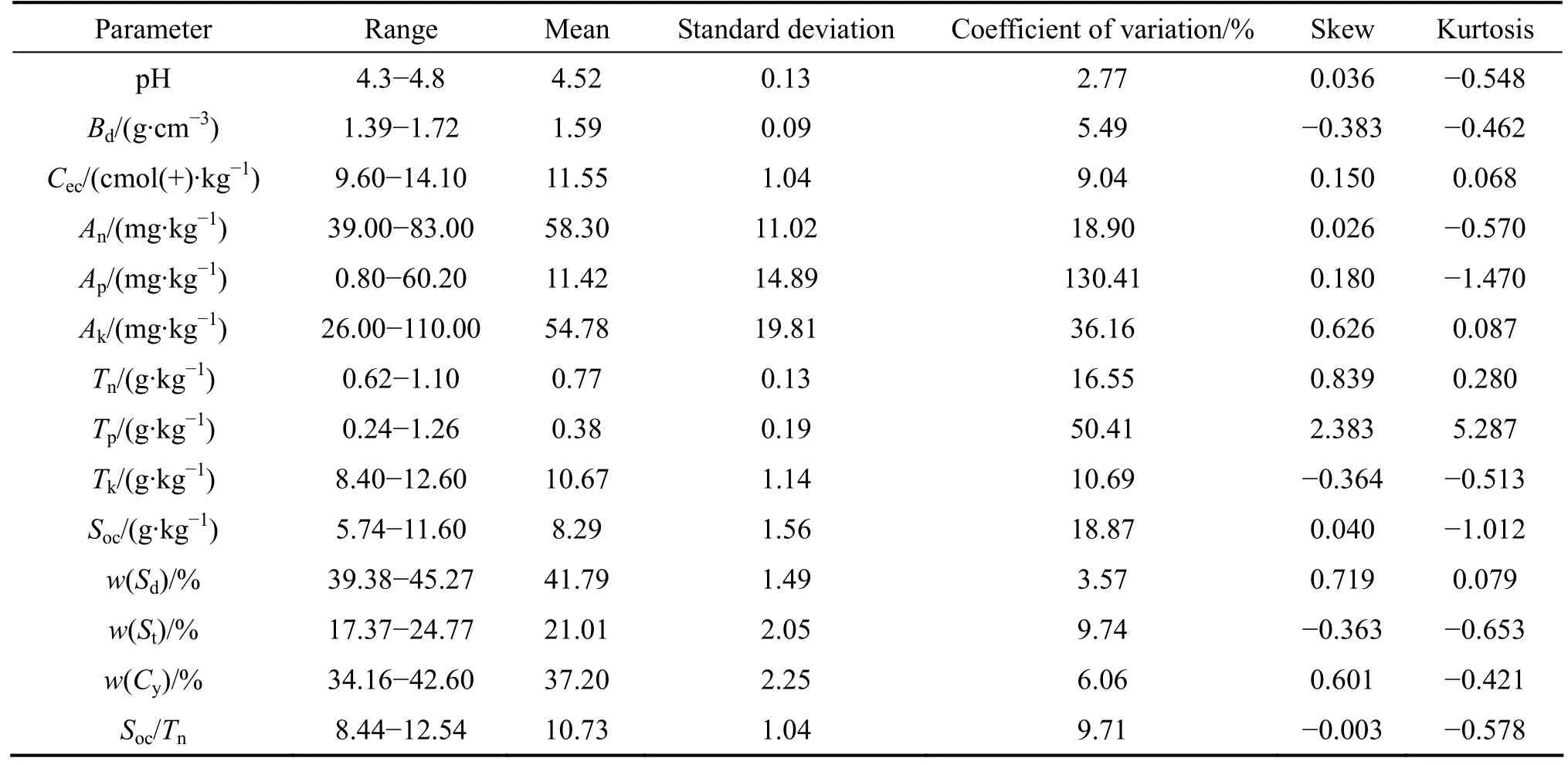
Table 1 Descriptive statistics of distribution of soil physical and chemical properties
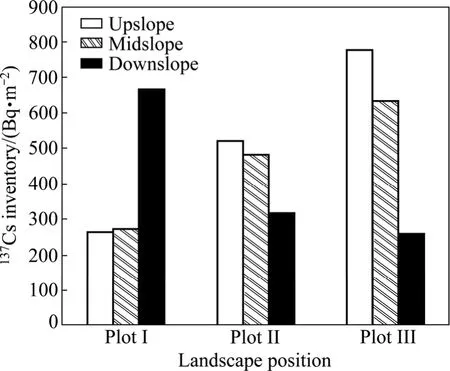
Fig. 2 Distribution of 137Cs inventory along transects of slopes
3.2 Aboveground biomass
Because of different soil physical and chemical conditions and the presence of a variety of plants on the slope under conditions of different forest-grass measures,the growth of plant and aboveground biomass on each slope presented different statues. In general, plant growth and aboveground biomass were best for depositional sites because of more-favorable soil properties and moisture conditions compared with upslope positions. In this work, the aboveground biomass, similar to soil properties, also showed strong spatial variability. The results are similar for the aboveground biomass at different slope positions in each plot, that is, the aboveground biomass is higher at the downslope than at the upslope and midslope (Fig. 3). For instance, in plot I,the aboveground biomass at the downslope was higher by 0.40 and 0.41 kg/m2than that at the upslope and midslope, respectively. The pine height measured when the aboveground biomass was obtained, was on average,highest at the downslope (200 cm), followed by the upslope (76 cm) and the midslope (28 cm). However, the variation degrees of the aboveground biomass on different slopes were different. In the wasteland (plot I),the aboveground biomass ranged from 16.00 to 34.21 g/m2. The variation degree in plot I was the highest, followed by that in pine (plot II) and ryegrass(plot III).
3.3 Impact of soil properties on aboveground biomass
Correlation analysis results on soil properties and soil productivity indicate a high degree of intercorrelation among the soil properties. The high multicollinearity of the soil properties indicates that no single soil variable directly impacts soil productivity;however, it is a combination of soil properties that result in decreased soil productivity. Because it is important to determine the combinations of variables that best explain the variations in soil productivity, the data were subjected to PCA.
The factors were rotated using the varimax method,and the soil data in three different plots were analyzed separately. Based on PCA, the soil properties in plot I were reduced to four principal factors (Table 3). The first and the most important factor, which explain 40% of the variation, has high factor loading (>0.50) for properties such as pH,Bd,Ap, andTp. Factor 2 has high loading fromAn,Tn,Tk,St, andCy, and collectively explains about 17% of the variation. The highly weighted variables under Factor 3 areCecandSd, both of which explain 14% of the variation. Factor 4 includesAkandSoc/Tn, which explains about 12% of the variation.Correlation coefficients among pH,Ap, andTpunder Factor 1 are strongly correlated (Table 2).Tpis selected as a representative from Factor 1 because it has the highest factor loading of 0.952. Meanwhile,BdandCyare selected from Factor 1 because they are not correlated with others. Similarly,AnandStare selected to represent Factor 2, whereas pH,Cec,An,Ak, andSoc/Tnare selected from Factors 3 and 4. The final soil properties selected for plot I areTp,Cy,St, pH,Cec,An,Ak, andSoc/Tn.

Table 2 Pearson correlation coefficients for soil properties and aboveground biomass
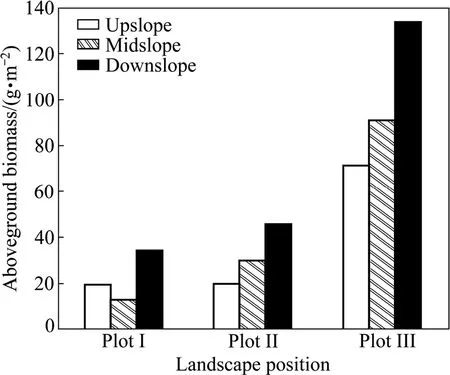
Fig. 3 Effects of erosion on aboveground biomass
The soil properties in plot II are loaded into three factors (Table 4). Factor 1 is made up of pH,Bd,Ak,Tn,Tp, andTk, contributing 42% of the variability in soilproductivity. Factor 2 consists ofSoc,St,Cy, andSoc/Tn,explaining about 23% of the variation. Factor 3 containsCec,Ap, andSd, explaining about 16% of the variation.The final soil properties selected for plot II areAk,Tk,Tp,Soc,St,Cec, andSd.
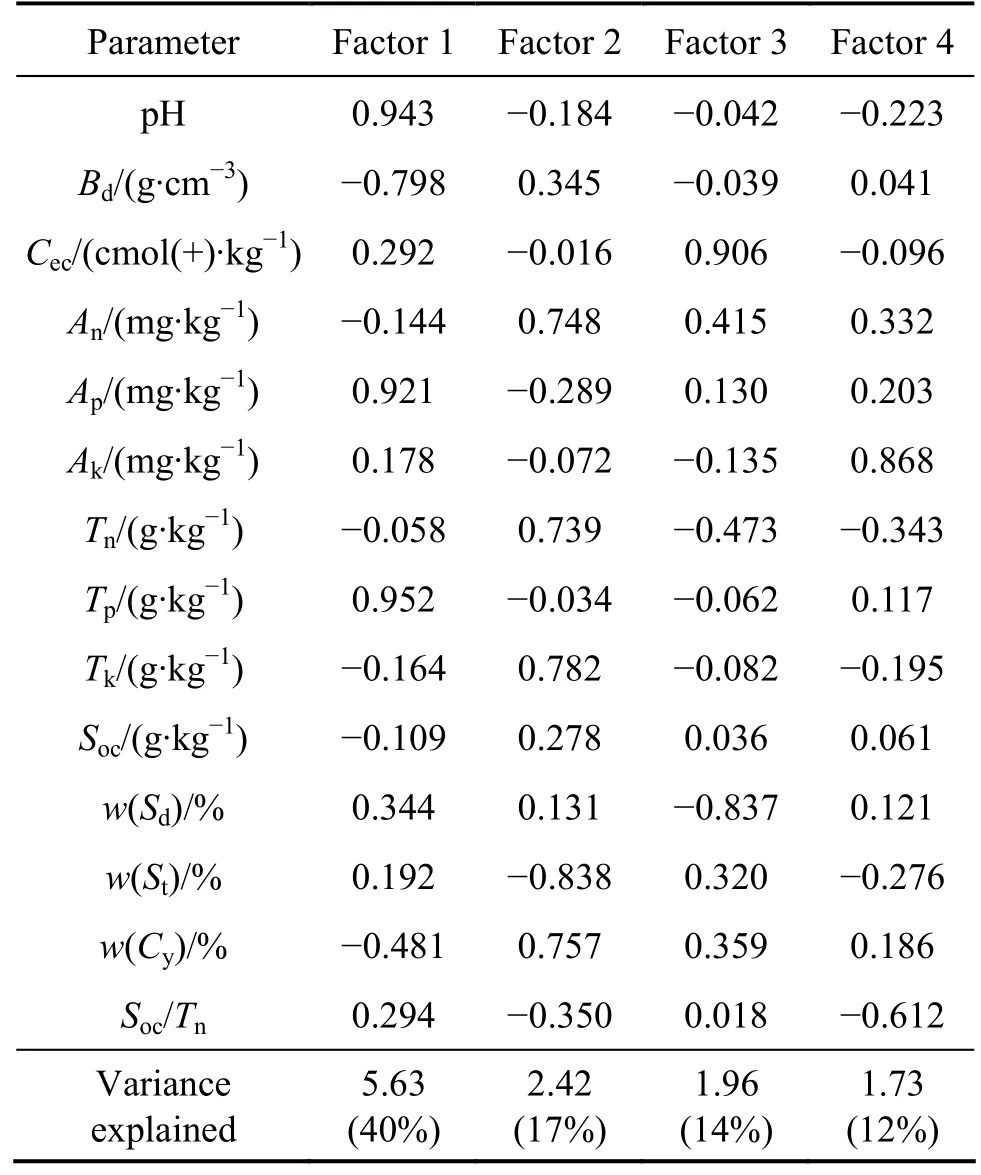
Table 3 Rotated factor pattern and loadings of soil properties in plot I
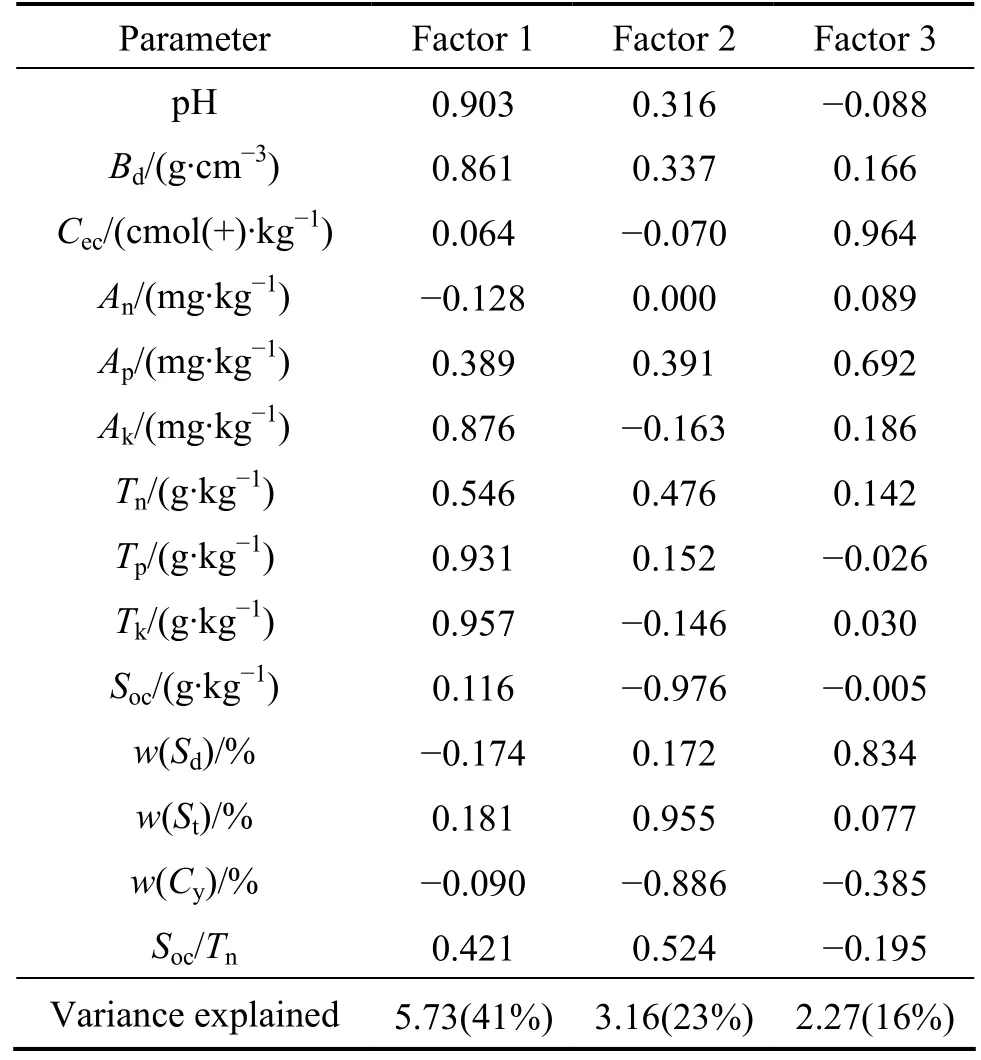
Table 4 Rotated factor pattern and loadings of soil properties in plot II
The soil properties in plot III are loaded into three factors (Table 5). Factor 1 consists of pH,Cec,Ap,Tp,Sd,

Table 5 Rotated factor pattern and loadings of soil properties in plot III
andCy, explaining about 42% of the variation in the soil productivity. Factor 2 consists ofAn,Ap,Tp, andTk,which explains about 25% of the variation. Factor 3 is made upBd,Tn,Soc,St, andCy. This factor explains 16%of the variation in the soil productivity. The final soil properties selected for plot III areAp,Sd,Tp,Tk,Bd,St,andSoc.
Following PCA, multiple regression analysis was used to gain further insights into how the selected soil properties individually affect aboveground biomass and obtain the quantitative relationship between these soil properties and aboveground biomass (characterizedY).Multiple regression analysis using the stepwise elimination procedure was performed to identify the smallest subset of soil properties for predicting aboveground biomass. The following regression equations are obtained:
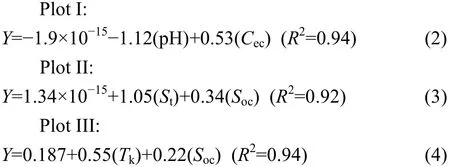
Different patterns emerge on the regression of the selected soil properties against the aboveground biomass in different plots. Aboveground biomass is significantly related to pH andCecin plot I,StandSocin plot II, andTkandSocin plot III. The correlation coefficients for the regression of the selected soil properties against aboveground biomass in plots I, II, and III are 0.94, 0.92,and 0.94, respectively. It is interesting to note thatSocis significantly correlated with soil productivity under the condition of forest-grass measures, whereas pH andCecare the main factors for soil productivity without SWC.Therefore, SWC plays an important role in sequesteringSocand improving soil productivity.
4 Conclusions
1)137Cs data indicate that soil erosion occurs on slopes without any SWC measure applied to them,whereas soil erosion phenomena do not occur on slopes with forest-grass measures. Therefore, SWC forest-grass measures play an important role in preventing soil from transferring from upslope to downslope portions of hilly regions.
2) The combined effects of erosion and its interactions with soil properties on aboveground biomass are confirmed. The nature of the influence of soil properties on aboveground biomass differs among different slopes. Based on the regression equations determined, SWC forest-grass measures play an important role in sequesteringSocand improving soil productivity.
3) Because the relationship between erosion and aboveground biomass is complex, more data for different seasons and years are required to explore these trends fully.
[1] JAVED I, HU Rong-gui, DU Li-jun, LI Lan, LIN Shan, CHEN Tao,RUAN Lei-lei. Differences in soil CO2flux between different land uses types in mid-subtropical China [J]. Soil Biology and Biochemistry, 2008, 40(9): 2324-2333.
[2] ZHAO Qi-guo. Some considerations for present soil and water conservation and ecology security of south China [J]. Bulletin of Soil and Water Conservation, 2006, 26(2): 1-8. (in Chinese)
[3] ZHANG Ming-kui, XU Jian-ming. Restoration of surface soil fertility of an eroded red soil in southern China [J]. Soil and Tillage Research, 2005, 80(1/2): 13-21.
[4] BAKKER M M, GOVERS G, ROUNSEVELL M D A. The crop productivity-erosion relationship: An analysis based on experimental work [J]. Catena, 2004, 57(1): 55-76.
[5] OZALP M, CONNER W H, LOCKABY B G. Above-ground productivity and litter decomposition in a tidal freshwater forested wetland on Bull Island, SC, USA [J]. Forest Ecology and Management, 2007, 245(1/2/3): 31-43.
[6] BERNTSEN J, PETERSEN B M, OLESEN J E. Simulating trends in crop yield and soil carbon in a long-term experiment-Effects of rising CO2, N deposition and improved cultivation [J]. Plant and Soil,2006, 287(1/2): 235-245.
[7] ZHAO Yun-chen, WANG Ping, LI Jian-long, CHEN Yu-ru, YING Xian-zhi, LIU Shu-ying. The effects of two organic manures on soil properties and crop yields on a temperate calcareous soil under a wheat-maize cropping system [J]. European Journal of Agronomy,2009, 31(1): 36-42.
[8] WANG K, WANG H J, SHI X Z, WEINDORF D C, YU D S,LIANG Y, SHI D M. Landscape analysis of dynamic soil erosion in Subtropical China: A case study in Xingguo County, Jiangxi Province [J]. Soil and Tillage Research, 2009, 105(2): 313- 321.
[9] ZHANG Bin, YANG Yan-sheng, ZEPP H. Effect of vegetation restoration on soil and water erosion and nutrient losses of a severely eroded clayey Plinthudult in southeastern China [J]. Catena, 2004,57(1): 77-90.
[10] ZHENG Hua, OUYANG Zhi-yun, XU Wei-hua. Variation of carbon storage by different reforestation types in the hilly red soil region of southern China [J]. Forest Ecology and Management. 2008, 255(3/4):1113-1121.
[11] HERWEG K, LUDI E. The performance of selected soil and water conservation measures-Case studies from Ethiopia and Eritrea [J].Catena, 1999, 36(1/2): 99-114.
[12] LI Xiao-yan. Gravel-sand mulch for soil and water conservation in the semiarid loess region of northwest China [J]. Catena, 2003, 52(2):105-127.
[13] WU Hui-long, FENG Zheng-yi. Ecological engineering methods for soil and water conservation in Taiwan [J]. Ecological Engineering,2006, 28(4): 333-344.
[14] HESSEL R, TENGE A. A pragmatic approach to modelling soil and water conservation measures with a catchment scale erosion model[J]. Catena, 2008, 74(2): 119-126.
[15] Nanjing Soil Research Institute. Soil physical and chemical analysis[M]. Shanghai: Shanghai Scientific and Technical Publishers, 1978.
[16] ALABACK P B. Biomass regression equations for understory plants in coastal Alaska: Effects of species and sampling design on estimates [J]. Northwest Science, 1986, 60(2): 90-103.
[17] JAGADAMMA S, LAL R, HOEFT R G, NAFZIGER E, ADEE E A.Nitrogen fertilization and cropping system impacts on soil properties and their relationship to crop yield in the central Corn Belt, USA [J].Soil and Tillage Research, 2008, 98(2): 120-129.
[18] VAN OOST K, GOVERS G, VAN MUYSEN W. A process-based conversion model for caesium-137 derived erosion rates on agricultural land: an integrated spatial approach [J]. Earth Surface Process es and Landforms, 2003, 28(2): 187-207.
[19] ARNAEZ J, LARREA V, ORTIGOSA L. Surface runoff and soil erosion on unpaved forest roads from rainfall simulation tests in northeastern Spain [J]. Catena, 2004, 57(1): 1-14.
[20] MALO D D, SCHUMACHER T E, DOOLITTLE J J. Long-term cultivation impacts on selected soil properties in the northern Great Plains [J]. Soil and Tillage Research, 2005, 81(2): 277-291.
[21] HERWEG K, LIDE E. The performance of selected soil and water conservation measures-case studies from Ethiopia and Eritrea [J].Catena, 1999, 36(1/2): 99-114.
[22] DURAN ZUAZO V H, RODRIGUEZ PLEGUEZUELO C R,ARROYO PANADERO L, MARTNEZ RAYA A, FRANCLA MARTINEZ J R, CARCELES RODRIUEZ B. Soil conservation measures in rainfed olive orchards in south-eastern Spain: Impacts of plant strips on soil water dynamics [J]. Pedosphere, 2009, 19(4):453-464.
[23] SU Zheng-an, ZHANG Jian-hui, NIE Xiao-jun. Effect of soil erosion on soil properties and crop yields on slopes in the Sichuan Basin,China [J]. Pedosphere, 2010, 20(6): 736-746.
[24] COX M S, GERARD P D, ABSHIRE M J. Selected soil properties’variability and their relationships with yield in three Mississippi fi elds [J]. Soil Science, 2006, 171(7): 541-551.
[25] SAWCHIK J, MALLARINO A P. Variability of soil properties, early phosphorus and potassium uptake, and incidence of pests and weeds in relation to soybean grain yield [J]. Agronomy Journal, 2008,100(5): 1450-1462.
